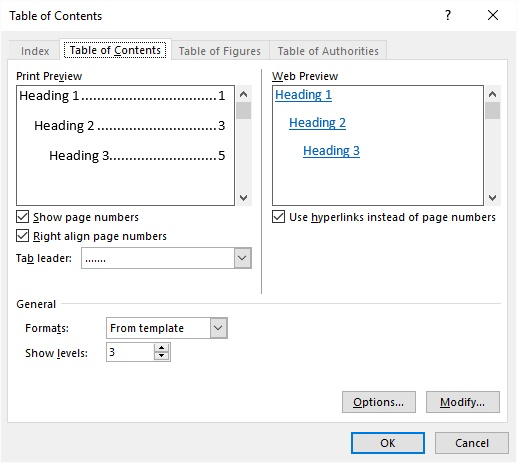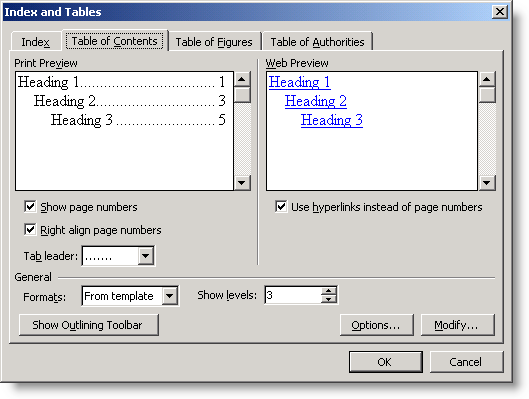

- WORD DEFINE BOOKMARK TABLE CONTENTS WORD FOR MAC 64 BIT
- WORD DEFINE BOOKMARK TABLE CONTENTS WORD FOR MAC CODE
- WORD DEFINE BOOKMARK TABLE CONTENTS WORD FOR MAC PLUS

WORD DEFINE BOOKMARK TABLE CONTENTS WORD FOR MAC CODE
If you replace the entire text of a paragraph, that will remove any character-level formatting, like a word or phrase in bold or italic.īy the way, the code from answer is for the legacy version of python-docx and won't work at all with versions after 0.3.0. If you pursue this path, you'll probably discover pretty quickly what the complexities are. To search in Tables as well, you would need to use something like: for table in document.tables: Paragraph.text = 'new text containing ocean' It has nothing to do with sections by the way :) for paragraph in document.paragraphs: Several folks have had success though, getting done what they need, using the facilities already present. These are requested fairly frequently, but an implementation for the general case is quite tricky and it hasn't risen to the top of the backlog yet. The current version of python-docx does not have a search() function or a replace() function.
WORD DEFINE BOOKMARK TABLE CONTENTS WORD FOR MAC 64 BIT
If this matters, I am using the 64 bit version of Enthought's Canopy on OSX 10.9.3 Maybe I am trying to do something that cannot be done-but I would appreciate your help if I am missing something simple. NameError: name 'coreprops' is not defined Running this produces the following error message: Wordrelationships, output, imagefiledict=None) Savedocx(document, coreprops, appprops, contenttypes, websettings, Words = document.xpath('//w:r', namespaces=document.nsmap)ĭocument = replace(document, word, Dictionary) I have followed other suggestions on this site and have tried to use earlier versions of the module ( ) that is supposed to have "methods like replace, advReplace" as follows: I open the source-code in the python interpreter, and add the following at the end (this is to avoid clashes with the already installed version 0.7.2): document = opendocx('/Users/umityalcin/Desktop/Test.docx') I am not seeing anything in the documentation that allows me to do this-maybe it is there but I don’t get it because everything is not spelled-out at my level. #then save the document in the usual way.ĭocument.save('/Users/umityalcin/Desktop/Test.docx') #single line of text and execute a find/replace using the dictionary above. #Now, I would like to navigate, focus on, get to, whatever to the section that has my Line of text (for example) “We shall linger in the chambers of the sea.” from docx import Documentĭocument = Document('/Users/umityalcin/Desktop/Test.docx') Then close the document keeping everything else the same. Task : Open a ms-word 2007+ document with a single line of text in it (to keep things simple) and replace any “key” word in Dictionary that occurs in that line of text with its dictionary value. Python is the only language I know (beginner+, maybe intermediate), so please do not assume any knowledge of C, Unix, xml, etc.
WORD DEFINE BOOKMARK TABLE CONTENTS WORD FOR MAC PLUS
I have read the documentation of python-docx 0.7.2, plus everything I could find in Stackoverflow on the subject, so please believe that I have done my “homework”. The oodocx module mentioned in the same page refers the user to an /examples folder that does not seem to be there.



 0 kommentar(er)
0 kommentar(er)
